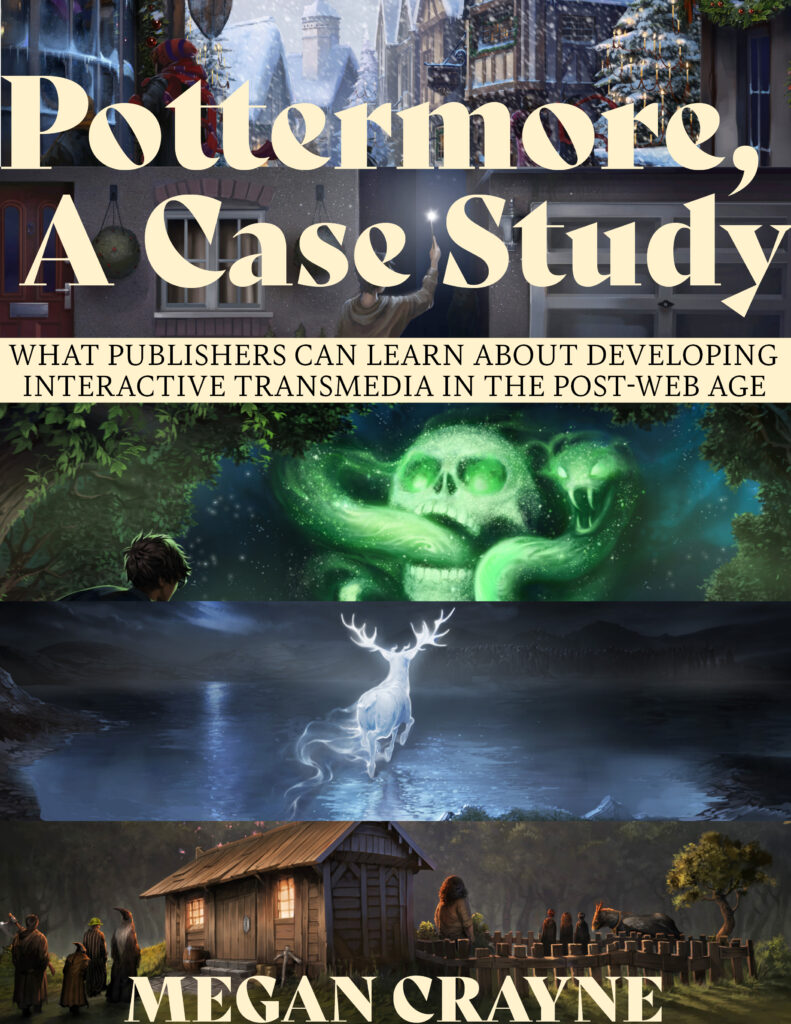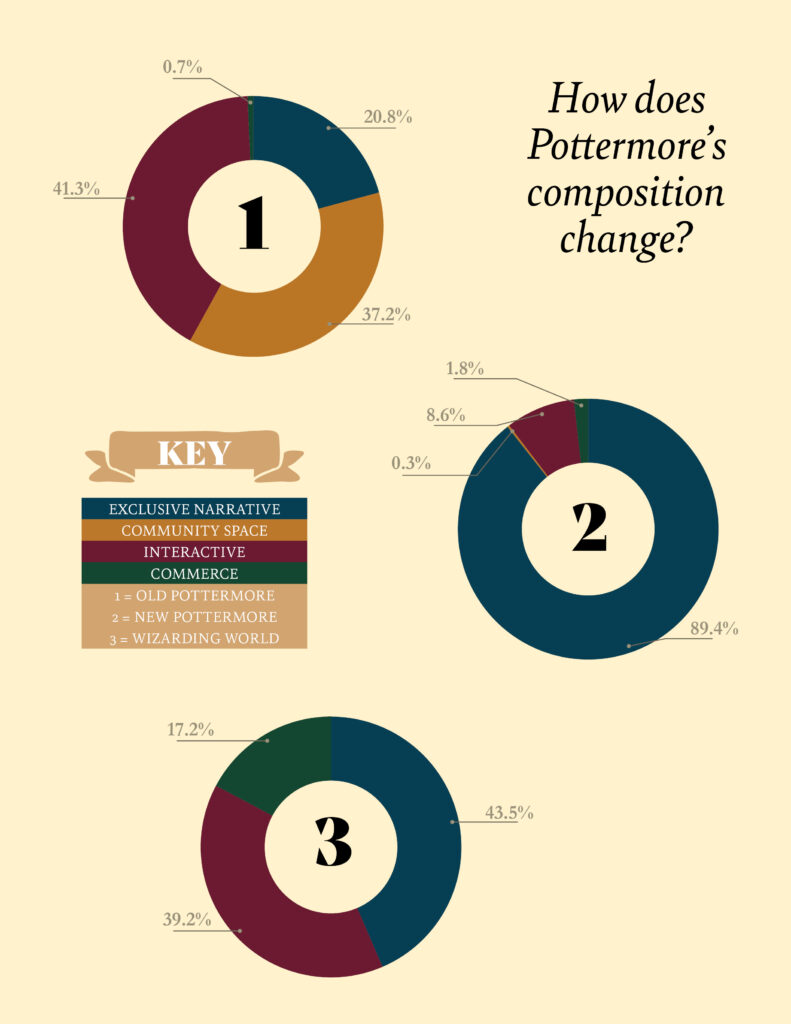Pottermore, A Case Study: What Publishers Can Learn About Developing Interactive Transmedia in the Post-Web Age was my final research paper to complete my MS in Book Publishing. I developed a system for categorizing and analyzing interactive transmedia storytelling projects, and then used that system to code and analyze each version of J.K. Rowling’s interactive website, Pottermore.
ABSTRACT
15 years after the publication of Harry Potter and the Philosopher’s Stone, J.K. Rowling’s magical world would be transformed into an interactive, playable website called simply Pottermore. It included all the elements that dominate successful interactive transmedia: exclusive narrative content that brought readers into the storyworld, spaces for members to create and build virtual communities, interactive gameplay, and additional forms of transmedia available for purchase. Then in 2015, Pottermore Publishing launched a major redesign of Pottermore in the face of declining eBook and audiobook sales.
By comparing and contrasting the three versions of Pottermore (Old, New, and now Wizarding World), I hoped to answer the question: why the sudden shift? Did the structure of each website offer insight into Pottermore Publishing’s strategy to sell and distribute digital editions to readers?
In order to evaluate each site’s composition, I counted each version’s webpages, then coded the webpages into four interactive transmedia modules: exclusive narrative, community space, interactive, and commerce. I concluded that Old Pottermore offered a more interactive and balanced Web interface, but the scale of the project was too large to financially sustain. New Pottermore, the second version of the website, became an endless Potter encyclopedia, while simultaneously removing almost all interactive gameplay and spaces for members to interact with one another. Although Wizarding World, the most recent version of Pottermore, has introduced new interactive and commerce modules to its website, their project could improve with the reintroduction of spaces for the fandom to rebuild the community it lost after the first redesign. Successful interactive transmedia not only includes participatory activities and interactive narratives, but provides spaces for communities of readers to engage with one another. This, in tandem with enough webpages devoted to commerce, could sustain interactive transmedia storytelling projects well into the future.

